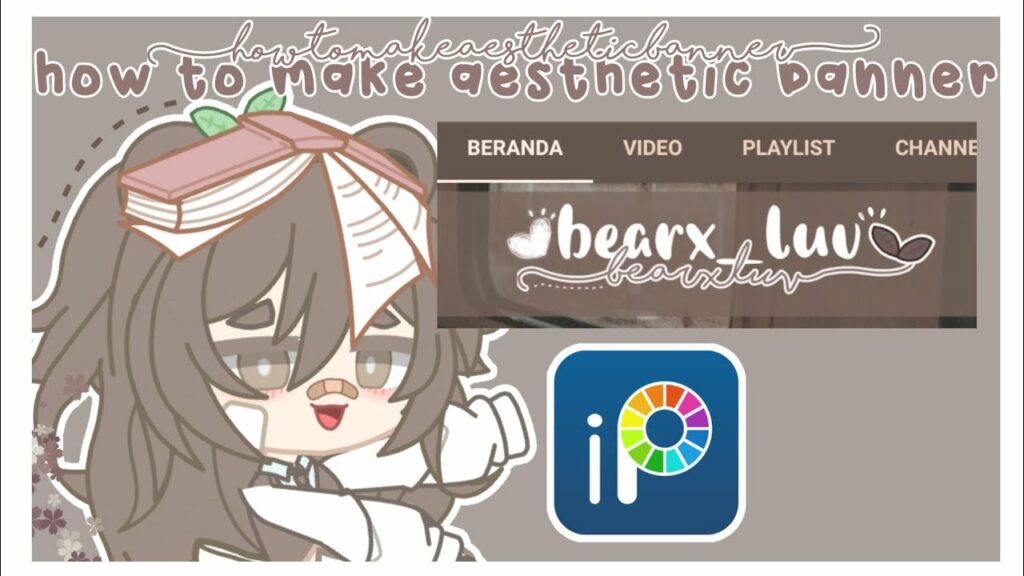
1. The Rise of Banner Aesthetic: Aesthetic Appeal or Annoyance?
🎬
The rise of banner aesthetic on the internet has been a topic of debate among users. Some argue that these visually appealing banners add a touch of artistry to web design, while others find them nothing more than an annoyance. This blog post aims to explore both sides of the argument and shed some light on the reasons behind this rise in popularity.
🌈
The main reason for the rise of banner aesthetic is undoubtedly its aesthetic appeal. These banners often feature eye-catching visuals, vibrant colors, and engaging animations that draw users’ attention. They can create a visually pleasing experience for visitors and make a website stand out from the crowd. In a world where attention spans are getting shorter, a visually appealing banner can help capture and retain users’ attention.
🤔
However, not everyone is a fan of this trend. Some argue that these banners can be distracting and even interfere with the overall user experience. They can take up valuable screen real estate, making it difficult for users to focus on the content they came for. Moreover, banners that are too flashy or intrusive can be seen as an annoyance, especially if they pop up unexpectedly or overshadow the main content of the page.
💡
One of the main reasons behind the rise of banner aesthetic is its effectiveness in conveying messages. Banners can be used to promote products, services, or important announcements in a visually appealing way. By using attention-grabbing visuals and concise copy, these banners can effectively communicate information and encourage users to take action.
⚖️
However, there needs to be a balance between aesthetic appeal and usability. Designers should consider the overall user experience when implementing banner aesthetics. Banners should not hinder navigation or obscure important information. It’s essential to ensure that the banners enhance the user experience rather than detract from it.
💻
In conclusion, the rise of banner aesthetic is a double-edged sword. While these visually appealing banners can enhance the overall aesthetics of a website and effectively convey messages, they can also be seen as an annoyance and disrupt the user experience if not used wisely. Designers should carefully consider the balance between aesthetic appeal and usability to create an engaging and user-friendly website.
2. The Psychology Behind Banner Aesthetics: How Colors and Design Influence User Perception
😀
En el mundo digital de hoy, donde los banners y anuncios publicitarios están a la orden del día, es crucial comprender cómo los colores y el diseño influyen en la percepción de los usuarios. La psicología detrás de los estilos visuales en los banners puede tener un impacto significativo en la forma en que los usuarios interactúan con ellos y, en última instancia, en el éxito de una campaña publicitaria.
Los colores desempeñan un papel fundamental en la forma en que percibimos las cosas. Cada color evoca diferentes emociones y estados de ánimo, y esto se puede aprovechar para captar la atención de los usuarios y generar una respuesta emocional. Por ejemplo, los colores cálidos como el rojo y el naranja pueden transmitir una sensación de urgencia o entusiasmo, mientras que los colores fríos como el azul y el verde pueden transmitir una sensación de calma y confianza.
Además de los colores, el diseño también desempeña un papel crucial en la percepción de los usuarios. Un banner con un diseño limpio y organizado tiende a ser más atractivo y fácil de comprender que uno desordenado y caótico. Los elementos visuales como las imágenes y las tipografías también pueden influir en la forma en que los usuarios perciben un banner. Por ejemplo, una imagen impactante o una tipografía llamativa pueden captar rápidamente la atención del usuario y mantenerlos interesados.
Es importante destacar que la psicología detrás de los estilos visuales en los banners no es una ciencia exacta. Lo que puede funcionar para una audiencia puede no funcionar para otra, por lo que es esencial realizar pruebas y experimentar con diferentes combinaciones de colores y diseños para encontrar la combinación ideal que resuene con tu público objetivo.
En resumen, la forma en que presentes tus banners y anuncios publicitarios tiene un impacto significativo en la forma en que los usuarios los perciben y responden a ellos. Los colores y el diseño desempeñan un papel crucial en esta percepción, ya que evocan diferentes emociones y estados de ánimo en los usuarios. Experimenta y realiza pruebas para encontrar la combinación ideal que capte la atención y genere una respuesta emocional en tu audiencia. Recuerda que no hay una fórmula exacta, así que es importante escuchar y adaptarse a las necesidades específicas de tu audiencia.
3. The Effectiveness Debate: Do Banner Ads Really Work?
🤔
En la era digital, la publicidad en línea ha evolucionado a pasos agigantados, y los anuncios de banners han sido una forma popular de promocionar productos y servicios. Sin embargo, ha habido un debate constante sobre la efectividad de los anuncios de banners y si realmente funcionan. En este artículo, exploraremos ambos lados de esta discusión y trataremos de llegar a una conclusión.
Por un lado, los defensores de los anuncios de banners argumentan que son una forma efectiva de llegar a una audiencia más amplia. Los anuncios de banners se pueden colocar en diversos sitios web, lo que permite una mayor visibilidad y alcance. Además, estos anuncios pueden ser altamente personalizables y segmentados, lo que significa que pueden dirigirse a públicos específicos con mayor precisión. Esto puede resultar en un mayor número de clics, visitas al sitio web y, en última instancia, conversiones.
Por otro lado, los críticos señalan que los anuncios de banners a menudo son ignorados o bloqueados por los usuarios. Con el aumento del uso de bloqueadores de anuncios, muchos argumentan que estos anuncios simplemente no son efectivos. Además, algunos estudios sugieren que los usuarios han desarrollado una «ceguera de banner», lo que significa que han aprendido a ignorarlos y centrarse solo en el contenido relevante. Esto puede llevar a una disminución de la tasa de clics y una menor efectividad en términos de generar resultados.
A medida que la tecnología sigue avanzando, también han surgido nuevas formas de publicidad en línea, como los anuncios nativos y el marketing de influencia. Estas estrategias han demostrado ser más efectivas en términos de generar interacción y atención de los usuarios. Algunos argumentan que los anuncios de banners están quedando obsoletos y que es necesario buscar alternativas más innovadoras.
En resumen, el debate sobre la efectividad de los anuncios de banners sigue en curso. Si bien algunos defensores argumentan que siguen siendo una forma valiosa de publicidad en línea, los críticos sostienen que están perdiendo terreno frente a otras estrategias más modernas y a las preferencias cambiantes de los usuarios. La clave para determinar su eficacia radica en comprender el público objetivo, la plataforma de publicación y las métricas de rendimiento. Solo a través de un análisis detallado y una estrategia adaptada se puede determinar si los anuncios de banners realmente funcionan en un mundo digital en constante evolución.
- 📱👨⚕️ Descubre cómo optimizar tu experiencia de atención médica con el Banner Patient Portal
- 🎨 ¡Descubre el impresionante mundo del 🌸 Banner Fu Xuan! ¡Inspírate con diseños increíbles y colores vibrantes! 🖼️💫
- 🎉 ¡Revive la nostalgia con el mejor 🔥 banner de los 80! Descubre los diseños más icónicos y tendencias de la época
- 🎉🌍 ¡Descubre los mejores ✈️ banners para tus viajes! Atrae miradas y planifica tus aventuras con estilo 🌟
- 🎯 ¡Descubre el poder del sensor manual Banner Q4X en español! 🌐
4. The Dark Side of Banner Aesthetic: Unwanted Intrusion and Ad Fatigue
🌑
Unwanted intrusion and ad fatigue are two common issues that accompany the dark side of banner aesthetic in online advertising. While banners may seem visually appealing at first glance, they can quickly become irritating and intrusive for users. This leads to a decrease in user experience and engagement, ultimately impacting the effectiveness of online advertising campaigns.
One of the main problems with banner aesthetic is the unwanted intrusion it imposes on users. Banners often appear as pop-up ads or obstructive overlays that disrupt the user’s browsing experience. Users are frequently bombarded with multiple banners simultaneously, making it difficult for them to focus on the content they are trying to view. This unwanted intrusion can create a negative perception of the brand behind the advertisement and lead to ad avoidance behavior.
Another issue that arises from the banner aesthetic is ad fatigue. Over time, users become desensitized to the banners that constantly fill their screens. This phenomenon, known as ad fatigue, occurs when users ignore or actively avoid interacting with banners due to their repetitive and uninteresting nature. Ad fatigue not only reduces the effectiveness of online advertising but also poses a challenge for advertisers who need to find innovative ways to capture and maintain users’ attention.
To combat the negative implications of unwanted intrusion and ad fatigue, advertisers must find alternative advertising methods that prioritize user experience and engagement. Rather than relying solely on banner aesthetics, advertisers can explore other formats such as native advertising or sponsored content. These formats seamlessly integrate advertisements into the user’s browsing experience, providing a more organic and less intrusive approach.
Additionally, personalization is key in mitigating the dark side of banner aesthetic. By tailoring advertisements to specific user interests and preferences, advertisers can increase the relevance and appeal of their campaigns, reducing the likelihood of ad fatigue. Customizing the advertising experience can also help build a positive brand perception and foster a stronger connection between the brand and the user.
In conclusion, the dark side of banner aesthetic lies in the unwanted intrusion and ad fatigue it creates for users. To overcome these challenges, advertisers must prioritize user experience by exploring alternative advertising formats and personalizing advertisements to user interests. By doing so, brands can enhance their online advertising campaigns and build stronger, more meaningful connections with their target audience.
5. Navigating the Ad Blocker Dilemma: How Users are Fighting Back Against Banner Aesthetic
🔍 En el mundo digital actual, la publicidad en línea se ha convertido en una parte inherente de nuestras vidas. Sin embargo, a medida que la tecología avanza, los usuarios cada vez más se sienten invadidos por banners y anuncios que interrumpen su experiencia de navegación y afectan la estética de los sitios web. Esta nueva realidad ha llevado a una creciente adopción de bloqueadores de anuncios por parte de los usuarios.
🛡️ Los bloqueadores de anuncios son extensiones o aplicaciones que impiden la carga y visualización de anuncios en los sitios web. Esto brinda a los usuarios un mayor control sobre su experiencia en línea y les permite navegar sin distracciones. Sin embargo, esta práctica ha llevado a ciertas controversias y dilemas tanto para los usuarios como para los creadores de contenido y anunciantes.
💪 Los usuarios están tomando medidas para luchar contra la estética de banners indeseados. Claramente, no están dispuestos a comprometer la experiencia en línea debido a la presión publicitaria. La adopción de bloqueadores de anuncios ha aumentado significativamente en los últimos años, y esta tendencia parece continuar en alza. Los usuarios están tomando el control de su experiencia y exigiendo un entorno en línea más limpio y estéticamente agradable.
🔧 Para los creadores de contenido y anunciantes, la creciente popularidad de los bloqueadores de anuncios ha planteado una serie de desafíos. Las marcas deben encontrar formas innovadoras de llegar a su público objetivo sin utilizar tácticas intrusivas que resulten en la instalación de bloqueadores de anuncios. Esto implica una mayor creatividad en el diseño de anuncios, la integración de publicidad nativa y la creación de contenido de calidad que genere una respuesta positiva de los usuarios.
✊ A pesar de las controversias, los debates y los desafíos, la lucha de los usuarios contra la estética de los banners y la invasión publicitaria sigue en marcha. Ya sea a través de la adopción de bloqueadores de anuncios, el apoyo a sitios web que ofrecen una experiencia publicitaria no intrusiva o la promoción de alternativas de monetización, los usuarios están tomando una posición y exigiendo un cambio en el panorama publicitario en línea. En última instancia, esta batalla entre los usuarios y los anuncios intrusivos está impulsando la industria publicitaria a buscar nuevas formas de llegar a los consumidores sin afectar la estética y la experiencia de navegación.
6. Moving Forward: Redesigning the Future of Online Advertising
🔮
In today’s digital age, online advertising has become an integral part of our everyday lives. However, as technology evolves and consumer preferences shift, the online advertising landscape must also adapt. In this article, we will explore the future of online advertising and the ways in which it is being redesigned to meet the changing needs of businesses and consumers.
One of the key trends we are seeing in the future of online advertising is a shift towards more personalized and targeted advertising strategies. Gone are the days of generic banner ads that simply hope to catch someone’s attention. With advances in data analytics and artificial intelligence, advertisers are now able to gather valuable insights about their target audience and deliver tailored ads that resonate with their specific interests and needs.
Another important aspect of the future of online advertising is the rise of video advertising. Videos have quickly become one of the most engaging and attention-grabbing forms of content online. As a result, advertisers are increasingly incorporating videos into their advertising strategies, whether it be through pre-roll ads on YouTube or sponsored content on social media platforms. The future of online advertising will undoubtedly involve more captivating and interactive video ads.
In addition to personalization and video, the future of online advertising will also be marked by an increased emphasis on ethical and transparent advertising practices. Consumers are becoming more aware of how their personal information is being used and are demanding more control over their data. Advertisers, in response, are reevaluating their advertising strategies to ensure that they are respectful of consumer privacy and are providing transparent information about data collection and usage.
Another important factor influencing the future of online advertising is the rise of ad-blockers. As consumers become increasingly bombarded with ads, many are choosing to install ad-blocking software to improve their browsing experience. Advertisers are recognizing this trend and are being forced to find new and creative ways to reach their target audience. This may involve collaborating with content creators, leveraging influencers, or exploring alternative advertising platforms.
The future of online advertising holds both challenges and opportunities for businesses. Those who are able to adapt to the changing landscape and embrace new technologies and strategies will be well positioned to reach their target audience and achieve their marketing goals. As the saying goes, «change is the only constant,» and nowhere is that truer than in the world of online advertising. So, let us embrace the future and continue to redesign and innovate to ensure the success of our advertising efforts in this ever-evolving digital world.

